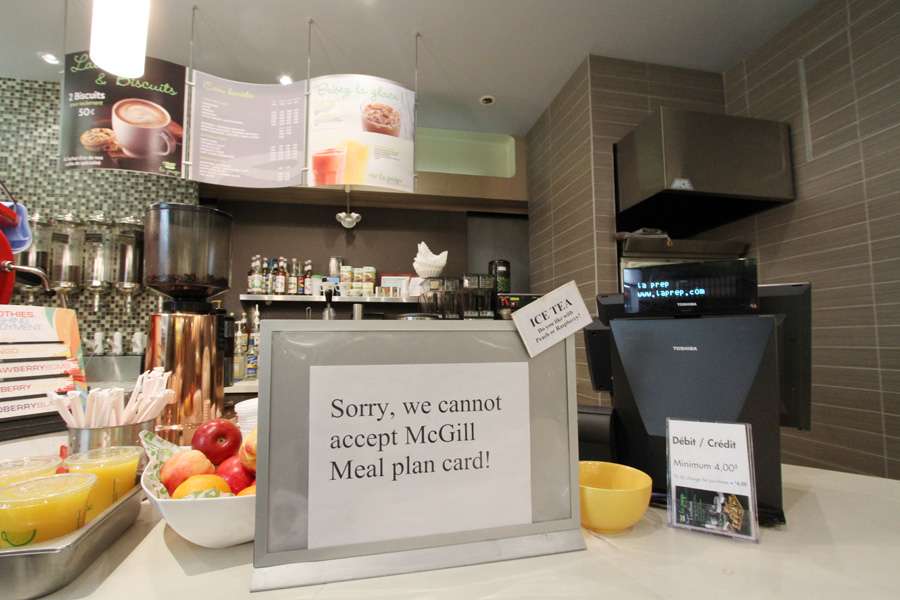Many McGill students are all too familiar with having their meal plan cards turned down at certain vendors on campus.
While accepting meal plans may seem like an obvious choice to the student, the system behind the service is much more complicated. This week, the McGill Tribune takes a look at the meal plan program and the factors that determine where you can use it on campus.
The meal plan program is managed by McGill Food and Dining Services (MFDS)—a subunit of Student Housing and Hospitality Services (SHHS). Students can use the meal plan to purchase food at both in-residence dining halls, as well as various other food vendors on campus, including Subway, Sinfully Asian, and Presse Café on the downtown campus, as well as Faberge Café and Vihn’s Café on Macdonald campus.
The main food service provider for McGill is Aramark, which manages numerous food service locations on campus on the behalf of MFDS, including two residential dining halls—Carrefour Sherbrooke and New Residence Hall, McConnell Engineering Caf, and Redpath Caf.
Monique Lauzon, MFDS marketing and nutritional advisor, said different providers enter into different contractual agreements with the meal plan program.
“Aramark was selected as McGill’s main food service provider following a public bid process four years ago […] against major companies like Compass and Sodexo,” Lauzon said.
The process is different for third-party vendors, such as Subway, Second Cup, and Sinfully Asian.
“[The companies] approach us and we look at how we could incorporate them into the meal plan, so that is more on a one-to-one basis,” Lauzon said. “[Then] a contractual agreement is negotiated [….] Costs are based on different criteria—[such as] your location and what you’re offering.”
Although vendors accepting the meal plan can be found around campus, some students express frustration with the lack of such vendors in the SSMU Building.
“I’ve worked in SSMU before as an executive and it’s one of the top comments that vendors get,” Josh Redel, manager of the Student-Run Café Le Nest in SSMU, said. “It’s the number one thing people ask for.”
Jonathan Taylor, a Liquid Nutrition franchisee and a tenant of the SSMU Building, said accepting meal plan at his business is “not feasible” because it is too expensive.
“The meal plan costs $10,000 to have a new point-of-sales device, so we had to run two separate inventories, two separate cash systems, two separate everything for the people who don’t use meal plans,” he said. “McGill also holds your funds for a month before giving back to you and as a small business, they can’t withhold a month worth of my sales.”
SHHS Senior Director Mathieu Laperle said that, since MFDS is a self-funded unit, the university does not subsidize its costs, which makes the meal plan costly to implement.
“We do have to generate a revenue to pay all the different costs,” he said.
According to Lauzon, these costs arise from a variety of factors.
“We pay our employees, facility fees, rent, we have to be able to self-finance our operations,” Lauzon said. “If we didn’t charge vendors to accept the meal plan, we would have to assume the costs of operating [at] the location, which includes IT support and administrative support that we provide to run the [meal plan].”
Laperle said the choice to join the meal plan is ultimately the decision of the tenants.
“Being a part of the meal plan is not mandatory, but of course, we believe it’s a potential of revenue—there are over 8,000 students on the meal plan,” Laperle said. “Should a vendor approach us and express interest in joining the meal plan, we certainly welcome that. However, it is a contractual agreement and has to work for both parties.”









